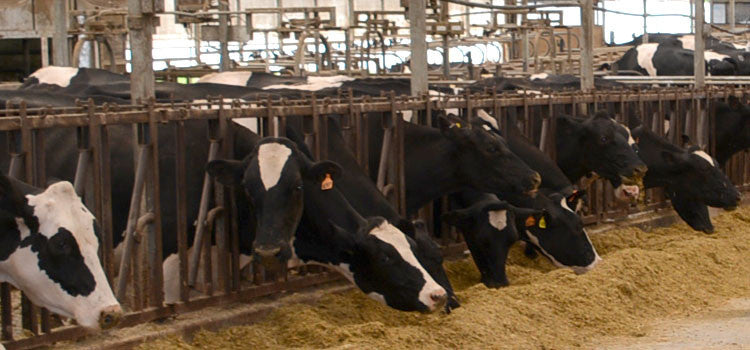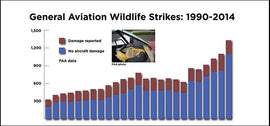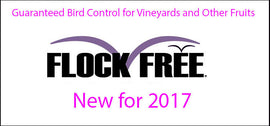In January this year we received an inquiry from the Midway Dairy in Declo, Idaho, regarding a severe starling problem in their barns. These barns are nearly ¼ mile long and over 100 feet wide and the roof structure is made from steel I-beams giving the birds a perfect roosting area along nearly every horizontal inch of steel. The owner, David Garrett, had measured the area and was estimating the flock at close to 200,000 birds.
The cows were literally covered with bird droppings, there was sickness in the barns and the roof was destroyed from the bird droppings not to mention the enormous amount of high-protein feed loss.
I flew to southern Idaho to take a look at the problem and determined we could solve the problem using a combination of unique bird control products. Rarely can bird problems, especially of this magnitude, be solved using only one method. This problem has been going on with no solution across the world for decades.
I suggested the installation of two of our Flock Free bird control Hazers along with three Agrilasers. Our hazers emit an invisible, lighter than air haze of methyl anthranilate, a food-grade grape extract that is acidic and irritates the trigeminal nerve in bird’s beaks. Agrilasers are programmable, eye-safe lasers (which we tested in the cows prior to installation) that move across the beams 24 hours a day. These lasers are highly effective in low-light situations as the birds see the beam as a solid object and fear it causing them to fly.The combination of these two products along with a spray application of Flock Free Tank Mix has been highly successful. The tank mix is very irritating to the birds, the Agrilasers keep them moving and the Hazers are very effective irritating birds in-flight since they inhale more of the product making the methyl anthranilate that much more effective.
The results are best described in a letter we received directly from David Garrett:
“Flock Free Bird Control installed three programmable Agrilasers and two Tweetzilla Hazers, along with 14 Flock Reflectors (on the roof) in one of my free stall barns in early March of this year (2016). Whereas tens of thousands of starlings had been roosting in there at night, as soon as the installation was completed, they no longer roost there and very few even enter that barn…. I am optimistic we are on our way to much better bird control and am planning to do a similar installation in the other free stall barn in late May of June. We are keeping our eye on this and plan on tweaking it some to see if we can keep more pigeons away. It will also be interesting to see what happens to the starlings this fall when they show up en mass again and I have everything ready for them. … I am optimistic that they will move on”.
Note – the second barn installation was completed in September.
Summary – not only was the program successful on a problem that plagues many dairy farmers and others with barns in other sectors, I would say the program was unbelievably successful given the intense numbers of birds that had been there generationally for years. Flock Free Bird Control, probably, is the only company capable of solving bird problems if this magnitude.



